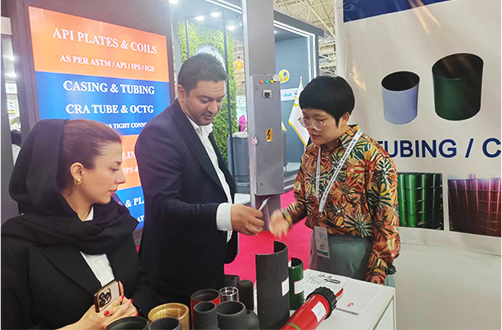- Afrikaans
- Albanian
- Amharic
- Arabic
- Armenian
- Azerbaijani
- Basque
- Belarusian
- Bengali
- Bosnian
- Bulgarian
- Catalan
- Cebuano
- Corsican
- Croatian
- Czech
- Danish
- Dutch
- English
- Esperanto
- Estonian
- Finnish
- French
- Frisian
- Galician
- Georgian
- German
- Greek
- Gujarati
- Haitian Creole
- hausa
- hawaiian
- Hebrew
- Hindi
- Miao
- Hungarian
- Icelandic
- igbo
- Indonesian
- irish
- Italian
- Japanese
- Javanese
- Kannada
- kazakh
- Khmer
- Rwandese
- Korean
- Kurdish
- Kyrgyz
- Lao
- Latin
- Latvian
- Lithuanian
- Luxembourgish
- Macedonian
- Malgashi
- Malay
- Malayalam
- Maltese
- Maori
- Marathi
- Mongolian
- Myanmar
- Nepali
- Norwegian
- Norwegian
- Occitan
- Pashto
- Persian
- Polish
- Portuguese
- Punjabi
- Romanian
- Russian
- Samoan
- Scottish Gaelic
- Serbian
- Sesotho
- Shona
- Sindhi
- Sinhala
- Slovak
- Slovenian
- Somali
- Spanish
- Sundanese
- Swahili
- Swedish
- Tagalog
- Tajik
- Tamil
- Tatar
- Telugu
- Thai
- Turkish
- Turkmen
- Ukrainian
- Urdu
- Uighur
- Uzbek
- Vietnamese
- Welsh
- Bantu
- Yiddish
- Yoruba
- Zulu
compression tubing coupler
Understanding Compression Tubing Couplers Essential Components in Fluid Transport Systems
Compression tubing couplers are critical components in a wide range of fluid transport systems, playing a vital role in the seamless connection and disconnection of tubes. These couplers are specifically designed to join two sections of tubing, ensuring a secure and leak-proof seal that is essential for maintaining the integrity of fluid flows in various applications. This article will explore the nature, functionality, advantages, and applications of compression tubing couplers.
What are Compression Tubing Couplers?
Compression tubing couplers consist of several parts, including a body, compression ring (or ferrule), and a nut. The body houses the connection interface, while the ferrule, usually made from metal or plastic, is fitted over the tubing. When the nut is tightened, it compresses the ferrule against the tubing, creating a strong seal that prevents leaks. This design allows for easy assembly and disassembly, making it popular in situations where maintenance or replacement of tubing is necessary.
How do They Work?
The operation of compression tubing couplers is relatively straightforward. When attaching two pieces of tubing, the end of the first tube is inserted into the body of the coupler, and the second tube is similarly inserted into the opposite side. The compression ring is positioned in place, and the nut is tightened using a wrench. This tightening action causes the ferrule to compress around the tubing, forming a tight seal that prevents any fluid from escaping. Importantly, this system does not require welding or soldering, making it a versatile solution for various industries.
Advantages of Compression Tubing Couplers
compression tubing coupler

One of the most significant advantages of compression tubing couplers is their ease of installation. Since they do not require specialized tools or skills for assembly, they save time and reduce labor costs. Additionally, they offer excellent flexibility; users can easily change or replace tubing sections without the need for complicated procedures.
Another notable benefit is their ability to maintain a reliable seal under various pressure conditions. Compression tubing couplers can accommodate a wide range of operating pressures and temperatures, making them suitable for both low-pressure and high-pressure applications. Furthermore, they are resistant to corrosion, especially when made from high-quality materials like stainless steel or brass. This durability ensures a long service life, reducing the need for frequent replacements.
Applications of Compression Tubing Couplers
Compression tubing couplers are used in various industries, including plumbing, automotive, aerospace, and pharmaceuticals. In plumbing systems, they are often used to connect different pipe sections, ensuring that water flows efficiently without leaks. In the automotive sector, these couplers serve as critical components in fuel, oil, and coolant lines, where maintaining a secure connection is paramount for vehicle safety and performance.
The pharmaceuticals industry also significantly benefits from compression tubing couplers, especially in processes requiring sterile conditions. These couplers enable seamless connections between tubing for transferring sensitive fluids, ensuring no contamination occurs during the transportation of medications and other critical substances.
Conclusion
In summary, compression tubing couplers are essential tools in fluid transport systems across numerous disciplines. Their straightforward assembly, robust performance under pressure, and resistance to corrosion make them an ideal choice for various applications. As technology advances, it is likely that the design and materials used in compression tubing couplers will continue to evolve, enhancing their capabilities and extending their utility in ever-more complex systems. Understanding these couplers is crucial for anyone involved in the design, maintenance, or operation of fluid transport systems, as their reliability significantly impacts overall system performance.
-
Tubing coupling plays a significant role in the chemical industryNewsApr.03,2025
-
The Importance of Tubing Crossover in Various Industrial FieldsNewsApr.03,2025
-
The characteristics and important role of Tubing Pup JointNewsApr.03,2025
-
Characteristics and functions of Pup jointNewsApr.03,2025
-
Characteristics and Functions of Pup Joint PipeNewsApr.03,2025
-
Application of Coupling Casing in Various ScenariosNewsApr.03,2025







